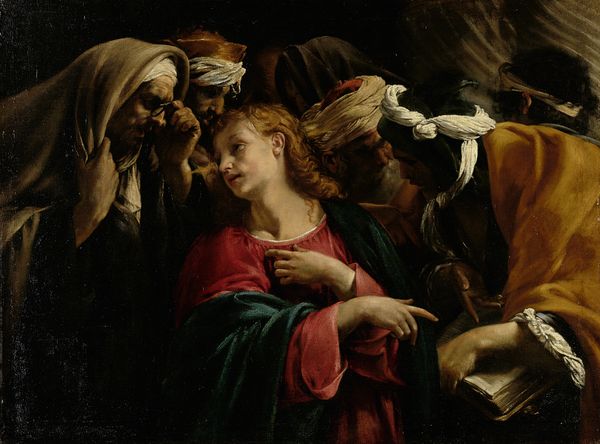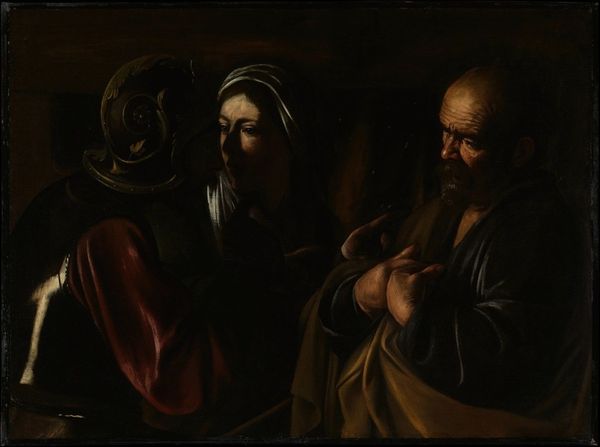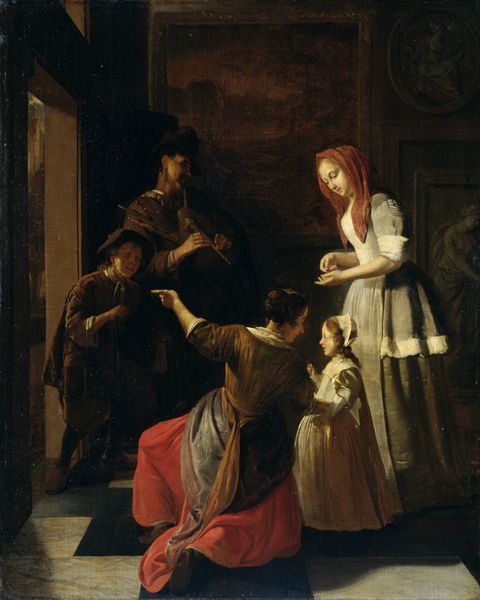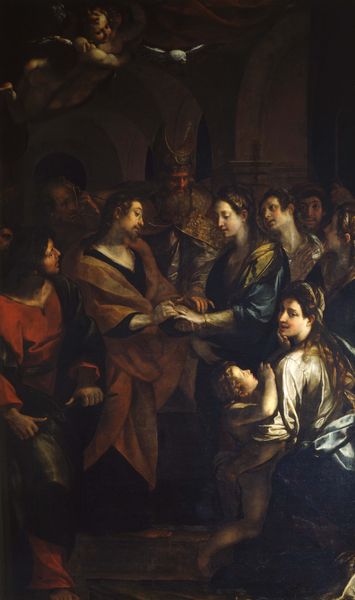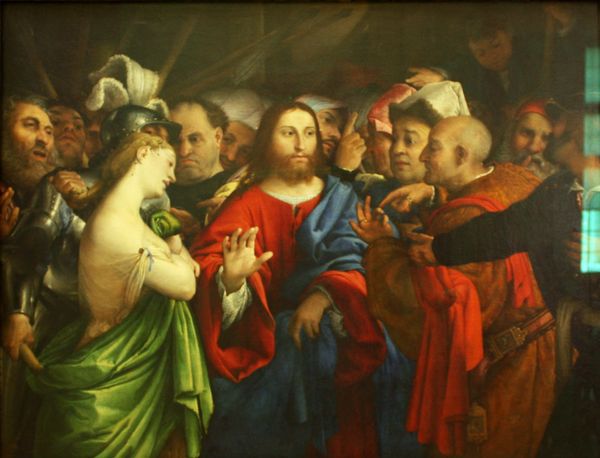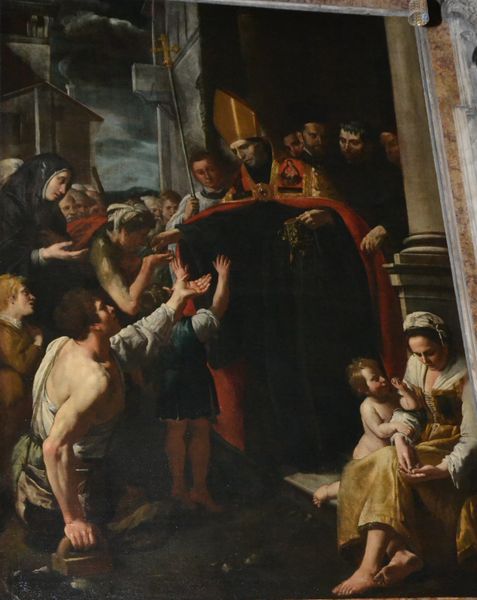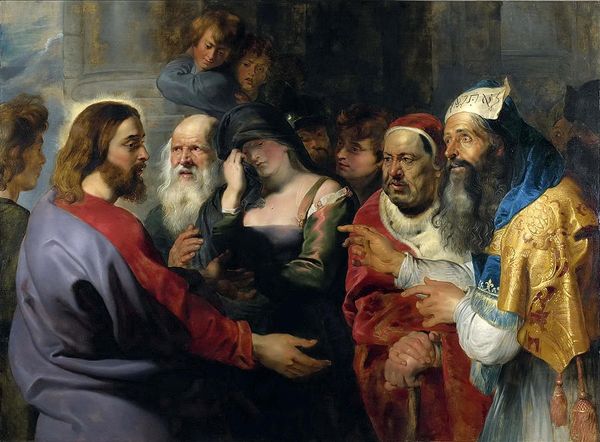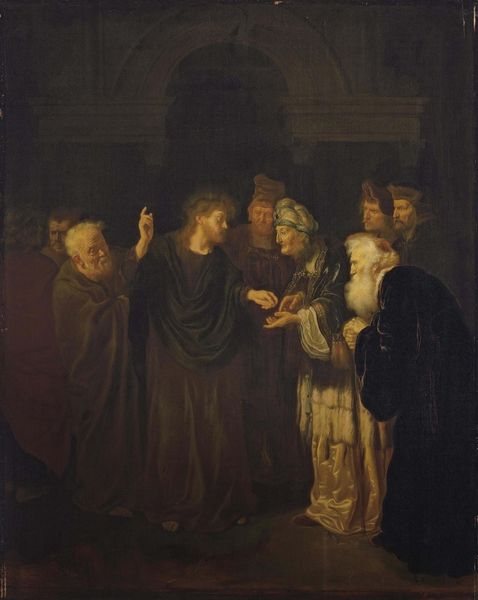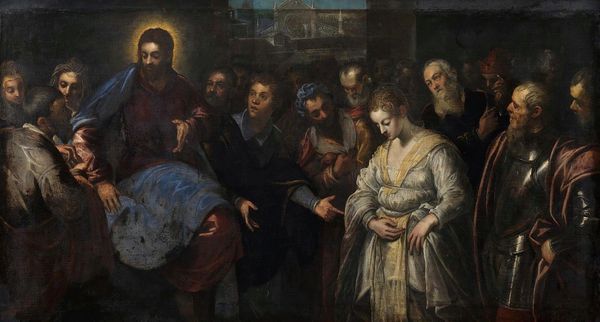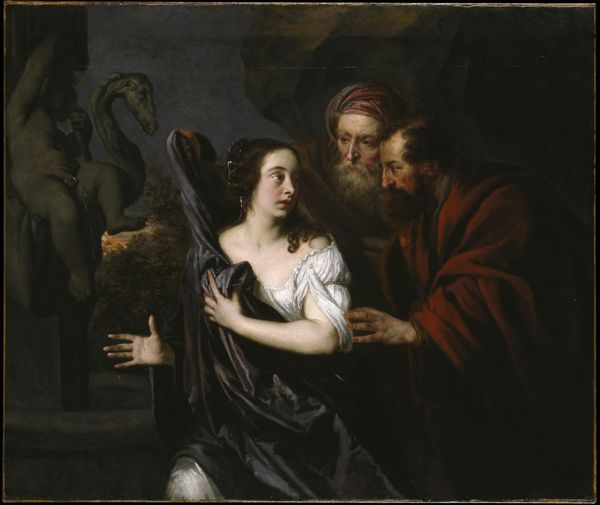
#
silhouette
#
culture event photography
#
dark-toned
#
dark image
#
dark silhouette
#
person communication photography
#
animal silhouette
#
neutral brown palette
#
film
#
celebration photography
Copyright: Public Domain: Artvee
Curator: Gerard van Honthorst offers us, with “The Denial of St. Peter,” completed circa 1623, a fascinating study in chiaroscuro. Art Historian: My immediate impression is of drama, and of discomfort. The compressed space and the stark lighting seem almost cinematic, heightening the psychological tension in the scene. Curator: Precisely. Honthorst’s deployment of tenebrism, that pronounced contrast between light and shadow, carves the figures from the darkness. Notice how the flame becomes both the literal and symbolic focal point of the composition. The directional lines, from the soldier’s spear to the accusing finger, guide our gaze to Peter's exposed vulnerability. Art Historian: It’s hard to ignore the socio-political undercurrent here. Honthorst was painting in Utrecht, a center of Catholicism in the predominantly Protestant Dutch Republic. The painting clearly places the viewer in a fraught religious moment. St. Peter's denial resonates within the contestations around faith and allegiance during that period. How do individuals navigate truth, identity, and authority? Curator: Undoubtedly. And, from a compositional perspective, it's brilliantly executed. The use of a warm palette is strategic: ambers and ochres in contrast with the cool darkness. Observe also, the artist's careful rendering of textures, how the smoothness of a face meets the ruggedness of a beard, drawing a connection of intimacy within what is essentially a highly orchestrated staging. Art Historian: I also consider Honthorst’s patronage. Who was commissioning such works? Wealthy Catholic patrons were eager to preserve visual representations and stories central to their identity in a climate increasingly hostile to their faith. Works like this functioned to sustain community identity when faced with external pressure. It serves to remind us that the personal turmoil and political undertones are perpetually enmeshed. Curator: I can concede that your argument is not without foundation. And regardless, this painting functions as a profound examination of how effectively form illuminates the psychology of its narrative. Art Historian: Absolutely. And from the perspective of History, artworks act as mirrors and flashlights reflecting the human condition and shining lights on crucial cultural, and religious events.
Comments
No comments
Be the first to comment and join the conversation on the ultimate creative platform.
